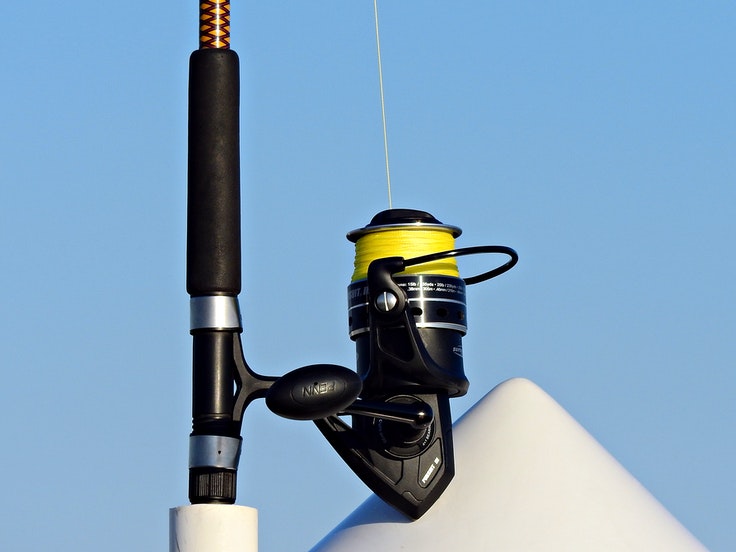
Although nylon is the main material used for surfcasting, advances in technology have made it possible to develop braid models that are perfectly suited to this type of fishing.
We're going to start by outlining the advantages and disadvantages of choosing braid as theline body for your set for beach fishing with bait.
We'll then look at which braids you should use to make a wise choice that won't cause any problems during your sessions.
The qualities and defects of this type of line
.jpg)
When choosing a particular product, you need to think things through so that you don't regret it later. Knowing all the consequences of a change can help you decide whether or not to go for it.
Braid thread is not necessarily the choice of beginners, as it represents a significant budget. Unlike nylon line, you'll need to multiply your budget by a factor of 2, 3 or 4 to fill your reel spool properly.
On the other hand, you can opt for a thinner diameter for the same strength, as braid is more resistant. This will give you a longer casting distance thanks to less friction on the spool lips or in the rings. Be careful, however, as hard casting can weight to serious cuts on the fingers. It's best to wear a finger guard to avoid bad experiences.
Another positive point, and not the least, will be the sensations you get from it. The elasticity of nylon has its advantages, but it doesn't allow you to feel the head strikes of fish or even bites. Here, you can clearly experience new sensations and come back for more. You'll feel everything, and the icing on the cake is that the braid allows the fish to hook itself, whether it's a bass, a meagre or a sea trout.
Tosum up, the disadvantages are
- The price needs to be thought through, especially if you're a beginner
- The need for an experienced fingering tool
- More regular strokes, which may only be the result of seaweed on the line
- A sound in the wind that may slow some fish down
Advantages
- Greater casting possibilities at longer distances
- No elasticity, so you'll feel the line tenfold at all times when fishing
- Self-fastening on classic rigs, giving you a little more mobility around your rods
Which braid to choose?
.jpg)
Now that you've got the basics right for choosing braid, it's time to buy accordingly. There are a number of aspects to take into account to ensure you have the best chance of success on the water.
The spools on surfcasting reels are particularly large and have a good capacity. You'll need to opt for packaging that's totally in keeping with this. For a single reel you can opt for 300m, but quickly for 1000m and more if you need to fill several sets.
Colour can also be a factor . The lines should be as visible as possible to you and as unobtrusive as possible to the fish. It will therefore be common to use fluorocarbon leaders or snatch lines for greater discretion. You'll generally opt for colours that are eye-catching to the angler, such as chartreuse, yellow or even white, which can be seen very well in the sunlight.
The number of strands should also be considered. Depending on your fishing area, you could choose a 4-strand line for the most congested areas, as it is more resistant to abrasion. Or go for an 8-strand or more for areas where there's little risk of cutting, and take advantage of its glide for ever more distant casts and greater resistance for the same diameter.
Finally, there's the thorny question of the diameter of line to use. Generally, if you want it to be a benefit compared to nylon, it will be important to have a smaller diameter. Generally, anglers find a good compromise with 20/100. Some will use a little less and others a little more. Above all, it's important to think about casting, and not to overlook the snatch, and of course to use discreet equipment for your rigs.
Even if there is no single answer, if you are just starting out, or want to experiment with braid for the first time, a 300m spool in a bright colour with a diameter of 20/100 should give you a first approach and allow you to come to your own conclusions about its use.
You might also like to read :
